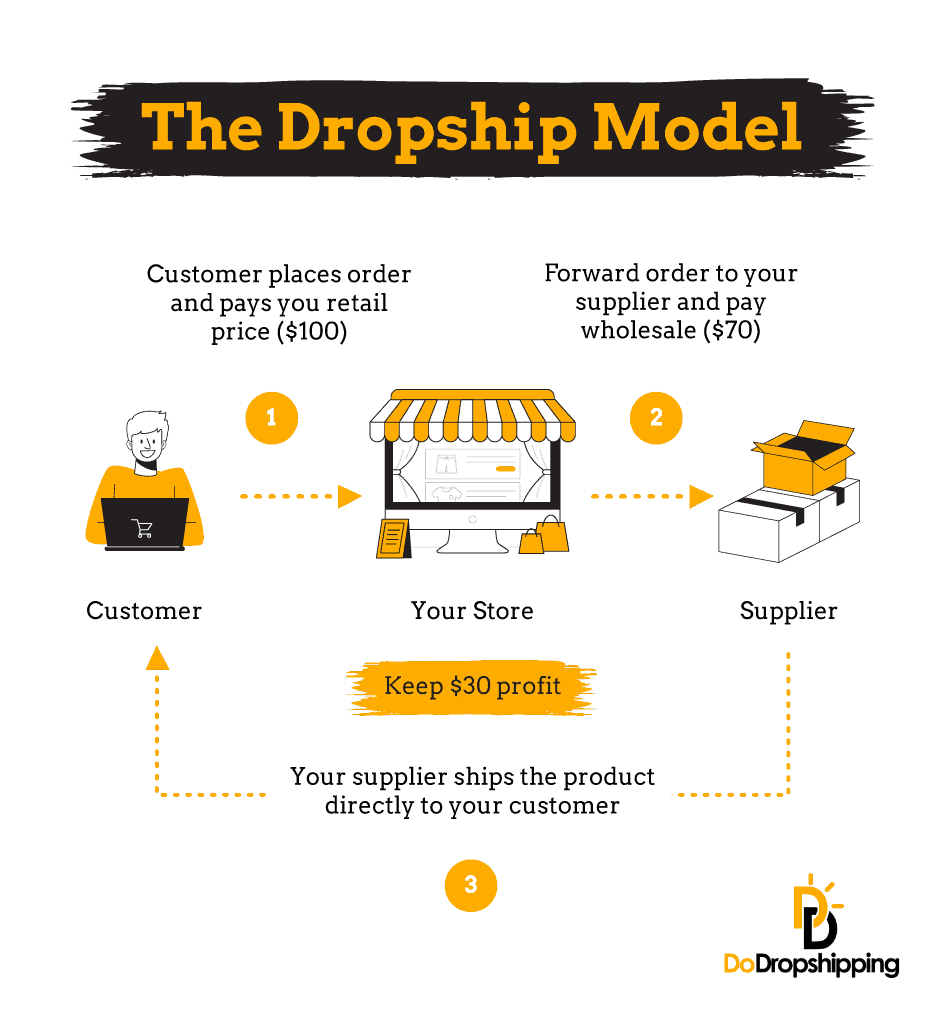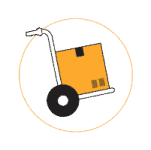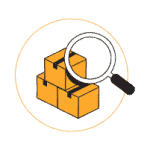Handling returns when dropshipping from China can get complicated because you may not want the customer to send the product back to China, nor would you want them to send the product back to you either.
So what do you do?
Well, read on because, in this article, we go through all of the best ways to handle them.
Why is correctly handling your returns so important?
With dropshipping, you will never hold nor ship the product; your supplier does it for you. So when a customer is asking to return the product, this can be difficult to know what to do.

If your supplier is located in the same country as your customers, this wouldn't be so much of an issue.
However, asking your customer to send the product to return your product to China will do quite a bit of harm to your business's reputation, nor is it feasible to do so.
By offering a hassle-free returns policy, you reassure customers that they're covered if, for whatever reason, they aren't happy with it. This, in turn, helps with converting visits into sales.
With an average of 10% in online sales resulting in a return and a whopping 40% for the clothing sector, returns are a real problem for online retailers that aren't going away.
If those figures made your eyes water a little, stay with us, and we'll look into this further so that we can explain how best to handle them.
The 5 most common reasons for return requests
To decide the best course of action, let's first look at the top five most common reasons customers will want to return their products.
1. Damaged or defective
The product has arrived damaged, packaging battered, or perhaps it just doesn't work. Understandably, the customer will want to return the product.
2. The product doesn’t match your store’s description
Perhaps the color, style, or other specifications doesn't match the one shown on your store's product page either in the description or the images used.
This is one reason why you should never copy/paste your supplier's product page, more so if they're located in China, as the translations can be a little off and sometimes even misleading.
Look at our article on How to Write Product Descriptions for Dropshipping Stores if you want to learn more about this.
3. Incorrect size
The product being an incorrect size may not even be yours or your supplier's fault; the customer could have just got it wrong. Nonetheless, you have to honor the returns in this regard just the same as the others.

This reason for a return will be very relevant to clothing retailers. Having a clear sizing chart on your store will help keep the return rate down for this reason.
Tip: If you're going to start dropshipping clothing, then check out our complete list of clothing dropshipping suppliers here!
4. Took too long to arrive
One of the more common reasons a customer will want to return the product, especially when dropshipping, the order is taking too long to arrive.

This is an even greater problem when doing so from China as the average delivery time is 19 days to the US, but it can sometimes take up to 60 days!
If a customer has bought this as a gift and the order has taken too long to arrive, they will understandably want to return it.
5. Buyer's remose
Buyer's remorse is, to put it simply, a change in heart and even regret in needing the product or service purchased.
Whilst buyer's remorse can happen along the sales funnel, in turn affecting your overall conversion rate, it can also occur after the purchase has taken place.

This may not necessarily be anything to do with your product or your customer service; perhaps the customer just decided they don't need it.
This is most certainly an unavoidable part of doing business. Most online countries' retail laws will oblige you to honor the return, even if you state the contrary in your returns policy.
Here's an example for the United Kingdom:
You must offer a refund to customers if they’ve told you within 14 days of receiving their goods that they want to cancel. They have another 14 days to return the goods once they’ve told you.
Source: GOV.UK
You must refund the customer within 14 days of receiving the goods back. They do not have to provide a reason.
How to handle returns when dropshipping from China
Now that we have taken a look at the five most common reasons for return requests let's go through how best to handle the returns.
It is, however, worth noting here before we go any further that there is no ‘one size fits all' solution to handling them. Because of this, we will refer to the above reasons provided as a reference.
Establish the customer's preferred outcome
So a customer may get in touch to complain about their order, they may not always state what they want you to do about this to make it right.
For the above reasons 1-3, offering a refund straight away will increase your overall refund rate, so it's important to offer a replacement to the customer first. If they don't accept, then offer a refund.
However, for reasons 4-5, there would be little point in trying to get a replacement sent out, so a refund will likely be the only desired outcome. But don't worry, we'll move onto how best to deal with this soon.
Request proof of the problem
For reasons 1-3, you will want to request your customer to send you a picture or a video demonstrating the problem. It would be best if you had this before any refunds or replacements are issued.
You will then need to pass this proof onto your supplier to receive your refund or the customer's replacement.
Offer a replacement product
This is only applicable to the above reasons 1-3. Offering a refund straight away will increase your overall refund rate, so it's important to offer a replacement before the refund.
Ensure that your customer is prepared to wait an additional X amount of days before arranging the replacement. If they are still not happy, you can always offer a percentage refund to sweeten the deal (this usually works). This is still better than a full refund.
If the customer doesn't accept a replacement, then move onto the next step.
Provide a refund
For all of the above-listed reasons for a customer would request a return, a refund may be necessary.
You can carry out the refund directly from your sales platform; below, we have an example of this on the Shopify platform.

Don't wait for your supplier to refund you before you refund your customer; this is a terrible business practice that happens all too often.
Remember, your customer purchased from you, not your supplier.
And don't squabble
How you handle returns reflects directly on your business' image. Do you want to be known as the company that squabbles over the refund of a low-ticket item?
This is important now more than ever as customers will often take to social media and review platforms to complain when they've encountered a bad customer service experience.
Because of this, the word spreads the word faster and wider than ever before:

For low-ticket products, just don't squabble. Once you have the proof of the problem, resolve the issue and then handle it with your supplier.
It's probably not going to be worth the hassle of having your customer return it first, and this applies to all of the above reasons mentioned. If you are making plenty of sales, you can likely afford to soak up this loss.
However, with the higher-ticket products, for the above reasons 4-5, you will need the product returning before issuing a refund.
If you have been honest about your shipping times, then the customer will understand. They should also expect to ship the product back if they have changed their mind on wanting it.
Speak to your supplier
Reasons 1-4, your supplier will be on the hook for resolving, whether by sending a replacement or refunding you. If a replacement is sent out, make both you and your customer have the new tracking number.
You probably should do this before using the supplier, but make sure you understand how they handle refunds and returns.
Just because, for example, they tell you it will take the product 20 days to arrive, it doesn't necessarily mean they'll refund you or send a replacement out once this time has passed.

If you cannot resolve this matter with your supplier, refund your customer or order the replacement now. Don't wait for the resolution as with AliExpress. For example, their dispute process can take up to 3 months to conclude.
It would help if you first tried to resolve the issue with your supplier directly, then go through the dispute process with their sales platform. The platform will then attempt to mediate a resolution.
Being proactive with returns
We've explained how to resolve return requests, but how can you reduce them? Surely looking into this makes perfect business sense.
Shipping/Returns policy
Having a crystal clear shipping and returns policy will both, in a sense, set your customer's expectations before they purchase from you.
If you state 20 days for delivery to your customers, then that's your promise to them. Of course, you can't be responsible for mitigating circumstances, such as customs delays, and the shipping policy is exactly the place to state this.
In your returns policy, you want to outline how you intend to handle returns as well as the cut-off date to do so.

Remember, just because you write this into your policy, the country's retail law in which you are making the sales will overrule your policy. So make sure you are operating within the law in this regard.
If you're interested in templates, check out this shipping policy template and this return policy template!
Using better quality products
When selling a better quality product, you will naturally reduce the number of return requests you will get.
When dropshipping, your customer can probably buy the product cheaper elsewhere, so making sure they get value for money is a must. Plus, a happy customer may also come back or recommend a friend.
Factoring returns into the pricing
We mentioned earlier that, on average, 10% of sales result in a return. An easy way sure this doesn't affect your profit margin is to add 10% onto the product price.
That way, you have already accounted for this loss, and you're less inclined to worry about issuing the refunds as and when they happen.
Be clear in product descriptions
If customers keep buying the incorrect sizes, compatibility, or functionality, then it's likely that your product descriptions could be the problem.

Products on Amazon are typically well worded and are a great place to get inspiration for yours.
Try to be crystal clear on your product's descriptions and consider all feedback on returns to work towards lowering them.
And if you're looking for some inspiration, check out these 8 product description examples from other ecommerce stores!
Conclusion
To summarise, returns are a pain but also part and parcel of doing business.
The number of returns varies greatly based on sectors, with clothing being as high as 40%, so this can be a huge problem if not addressed properly.
In this article, we went through the main five reasons customers will request a return and how best to handle them based on the reason.
We soon established that there isn't a single solution to all of the problems. However, fortunately, we narrowed down the desired outcomes.
At this point, we outlined that the customer's problem must be dealt with primarily and the matter resolved with your supplier secondly.
Finally, we give you a few handy tips that will assist with returns by providing a better quality product, factoring the return rate into the pricing, and being more transparent in the product description.
We hope this helps in handling returns when dropshipping from China.
If you're wondering now what the best dropshipping suppliers in China are, then check our other article here!
Do you have any other tips to add? Let us know in the comments below!













